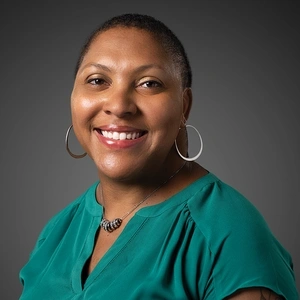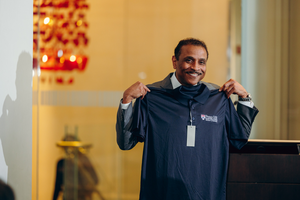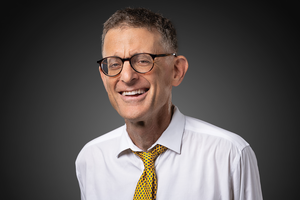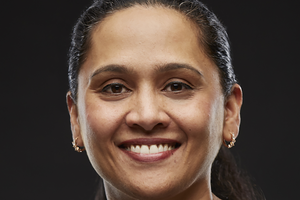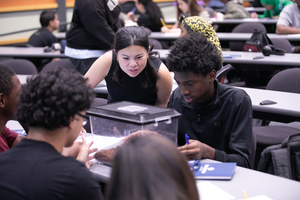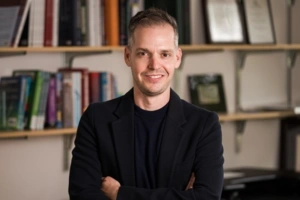Faculty Expert
-
Charlotte E. Jacobs
Director, Independent School Teaching Residency
Learning, Teaching, and Literacies Division
Professor? Researcher? Youth advocate? Charlotte E. Jacobs is all of the above, and more. Co-Director of the Independent School Teaching Residency program (ISTR) at Penn GSE, Jacobs brings a balance of research experience and practice to the role, having first taught in an independent school setting before pursuing doctoral studies at Penn GSE.
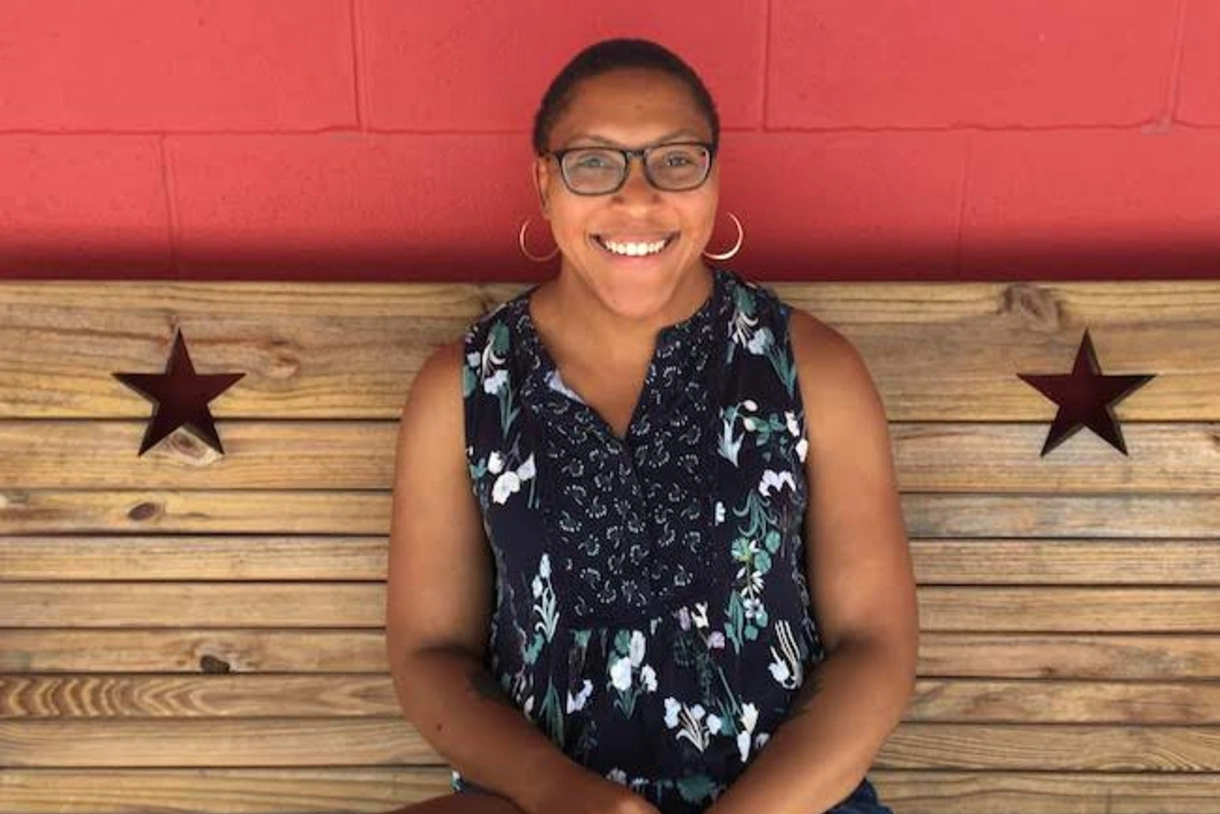
Jacobs is an active researcher, largely focused on the intersections of identity development, race, and gender in education concerning students and teachers, and recently released research in collaboration with Girls Leadership, a national nonprofit. She is the Research Director for SPARC (School Participatory Action Research Collaborative), Co-Founder of EnGenderED Research Collaborative, and serves on the boards for the Girls Justice League in Philadelphia, the Christina Seix Academy in Trenton, NJ, and the Oprah Winfrey Leadership Academy for Girls. We sat down with Jacobs to learn more about the breadth of her experience, how relationships have shaped her journey, and what she’s been up to recently.
You have your fingers in a lot of pies. When you’re at a party, how do you introduce yourself?
I say that I am a teacher educator, researcher, and also a consultant who works with schools around equity and justice. Those are the big things I do.
I am lucky enough to have a hybrid position where I get to be working with novice teachers who are interested in making their careers in independent schools and becoming social justice oriented and antiracist educators. And I also get to work with young people who are working to make their schools more equitable. Those are my big areas, and then my research grows out of those different areas.
Tell me a little more about the research you released with Girls Leadership, “Ready to Lead: Leadership Supports and Barriers for Black and Latinx Girls.”
I think what I found interesting was, one, being able to see that the data shows that Black and Latinx girls show a higher interest in becoming leaders and that they already see themselves as leaders, but what gets in the way is often racial and gender stereotypes and their intersections, and so they aren’t getting the support they need to develop skills or be in positions of leadership.
Want to learn how to support healthy and equity-oriented SEL in your classroom, school, or organization? Join Jacobs for the Social-Emotional Teaching and Learning institute.
We gathered data from students and also teachers. Reading through teacher data, there was a wide range in terms of how they were understanding Black and Latinx girls and their leadership. Some were saying it’s important and others were saying, ‘yeah they don’t have the skills they need to be leaders.’ There was also this reflection that teachers didn’t have specific training around leadership or gender equity. If they aren’t trained, how are they supposed to nurture young leaders?
One thing I loved was asking different girls about how they were defining leadership and when they felt supported or unsupported as leaders, which were shared as quotations in the report. Being able to hear in their own words how they see themselves and understand their worlds is so powerful.
I think one thing that was really interesting to me was that the research busted some racist myths about who sees themselves as a leader, and what was great is that it got mainstream press attention, reaching people beyond academia.
Not only does it bust the racist myths, but it also busts the adultist myths that we have about young people not having enough knowledge to make impactful change or to critically view the world. Oftentimes in our society we don’t pay attention to young people, and to what they’re calling for, asking for, or demanding to improve their own circumstances or the broader world.
It was a reminder to see how brilliant young people are, and that they are starting to develop these critical lenses in middle school. How do we as adults pay attention to what they are saying and support them in the action they want to take?
What happens next with that research, or what do you hope happens next?
I hope that it starts or continues conversations, particularly in organizations that work with young people – nonprofits in addition to schools. Thinking about if Black and Latinx girls are interested in leadership and want to be change agents, how do we work to ensure they get the skills they need and the access to different people and networks to achieve their goals. As well as conversations around the education teachers need to recognize bias: gender bias, racial bias, adultism.
I also hope too that it positions Black and Latinx girls to work together collectively. One thing that often happens with youth activists is that they are often positioned as individual people who are doing these amazing things, with no real recognition of what it means to work collectively towards something.
You have a really interesting role – both at GSE and beyond – that allows you to pursue both research and practice. Was that intentional?
It’s funny- when I started my doctoral program in Teaching, Learning, and Teacher Education at Penn GSE I was interested in research but more interested in practice, and my idea was that I wanted to research as the vehicle to influence practice, particularly around equity and justice within schools
I love working with people and hearing about different people’s experiences and framing them in a way that both contributes to the conversations that are already happening and puts the spotlight on voices that are ignored or overlooked. I love that aspect of research and the type of research I do, and there’s always the ending part of, here’s what the research says, and here is what you can do with it.
I am more interested in the actions that happen as a result of the research than the research itself and putting it out there. I wouldn’t spend time doing this research if I didn’t think it was going to translate into some sorts of action. That’s also part of why I decided to publish in different places, including academic journals but also participating in the Girls Leadership report and publishing in some independent magazines. I’m trying figure out how I get my ideas out there in different spaces so people can read them makes sense of them and move to action. And for young people, I’m thinking a lot about how I can make sure they are getting access to the work that I am doing.
My approach to the intersection of research and practice is influenced by the mentoring that I had from Dr. Sharon Ravitch and Dr. Howard Stevenson, in addition to Dr. Mike Nakkula. Both Dr. Ravitch's and Dr. Stevenson's community-based work, and approach towards disrupting harmful power dynamics, and work with young people in schools gave me a framework for thinking about how to center the knowledge of youth in my work and how to make my work accessible to multiple audiences.
Talk to me about your new(ish) research collaborative. Why did you form it and what are your goals?
I founded EnGenderED Research Collaborative in July of 2020 with my longtime “academic life partner” Dr. Katie Clonan-Roy, who is an Assistant Professor at Cleveland State University. We got to know each studying middle school girls at Penn GSE and we also both worked with Dr. Mike Nakkula in his adolescent development course. As we were doing our research with these different populations of girls, we got to learn more about the field of girls studies, the history of girls studies, which only emerged in the 90s and was primarily white, middle class, heterosexual. As a result, we found that some of the frames that were dominant were not frames that would fit the experiences of the girls we were working with, particularly because of their race and class. We worked with Dr. Nakkula to develop a model of youth development that focuses on the specific competencies that we see girls of color brining to the table and that need to be leveraged.
From there we’ve continued to do work centering those experiences and were both getting asked to do professional development and work with schools and organizations in different ways. We asked ourselves, why not create a collaborative where it’s not just the two of us, but what if we gathered some of our buddies, people we know who are doing similar work, where we get to sit and exchange ideas about what we’re doing and we get to do both practice and research. The consulting we do, while what we’re doing is practice oriented, we’re also using it as a chance to think consider opportunities for new information that we can then think about, analyze, and put out into the world. Right now a big focus for us is working with schools around how they’re working to be more equitable and antiracist places.
How do your threads of research fit together?
Can I create places and spaces where young people feel like they belong, particularly young people from marginalized communities or who have marginalized identities? Whether race, gender, class, sexual orientation… that’s why I do the work I do. In schools, and even more broadly in education, there’s so many areas that need attention in terms of becoming more equitable, just, and inclusive. My research is highlighting the skills and competencies of young people that we can leverage and learn from.
What’s on the horizon for you, especially looking at your work with young people?
Right now EnGenderED is looking at schools as institutions and thinking about the culture and the different aspects of how they create environments that young people are a part of.
At the same time, we are continuing to do focus groups with young people. Recently Katie and I did a pilot study looking at experiences of girls of color in elite all-girls schools. We’re working on developing a paper and toolkit from that for practitioners to support girls.
We’ve been thinking about how do we look at different types of all-girls schools – public, charter, religiously-affiliated, what the experiences are for girls of color in those spaces and whether they are similar or different. Quite a bit of research has been done looking at all-boys schools but not as much in all-girls public schools.
That’s really interesting, I didn’t know that the research was skewed towards all-boys environments.
More broadly I think that reflects how patriarchy is part of our society. Not that boys of color don’t need attention, but even with initiatives like My Brother’s Keeper, the focus was on supporting boys of color and keeping them out of school to prison pipeline, but there wasn’t any attention paid to girls, who attend the same schools, are in the same classrooms, and live in the same neighborhoods. They should also have similar attention.
So both on a policy level but also in the research world there is an overlooking of girls of color. I think that is shifting now, there’s a lot more research out there about girls of color from people like Dr. Monique W. Morris and Dr. Venus E. Evans-Winters. There is growing attention and growing money; research money is being put in the places where scholars can do that kind of work, which is important and exciting.
When you look into the future, as a teacher educator, a researcher, a practitioner, what do you hope is your legacy?
Wow that’s a big question! I hope that girls – that young people – feel that they are seen, heard, valued, and respected, and that attention is paid to how important it is to develop critical lenses about their experiences as young people. I hope that we as adults are working with them to develop those critical lenses and that we’re working with them to develop the changes they want to see.
If nothing else I hope that young people see me as a co-conspirator who is working alongside them, and that I will use the different privileges and capital that I have to help them be the change agents that they want to be.
What drives me really is developing relationships with people and working to bring the experiences of marginalized young people to the forefront and having schools be places where young people feel valued, respected, heard, and that they belong. I see my life and my work as service and I feel like I’m using my position as a hybrid scholar-researcher-educator to do service in all these different spaces.
Media Inquiries
Penn GSE Communications is here to help reporters connect with the education experts they need.
